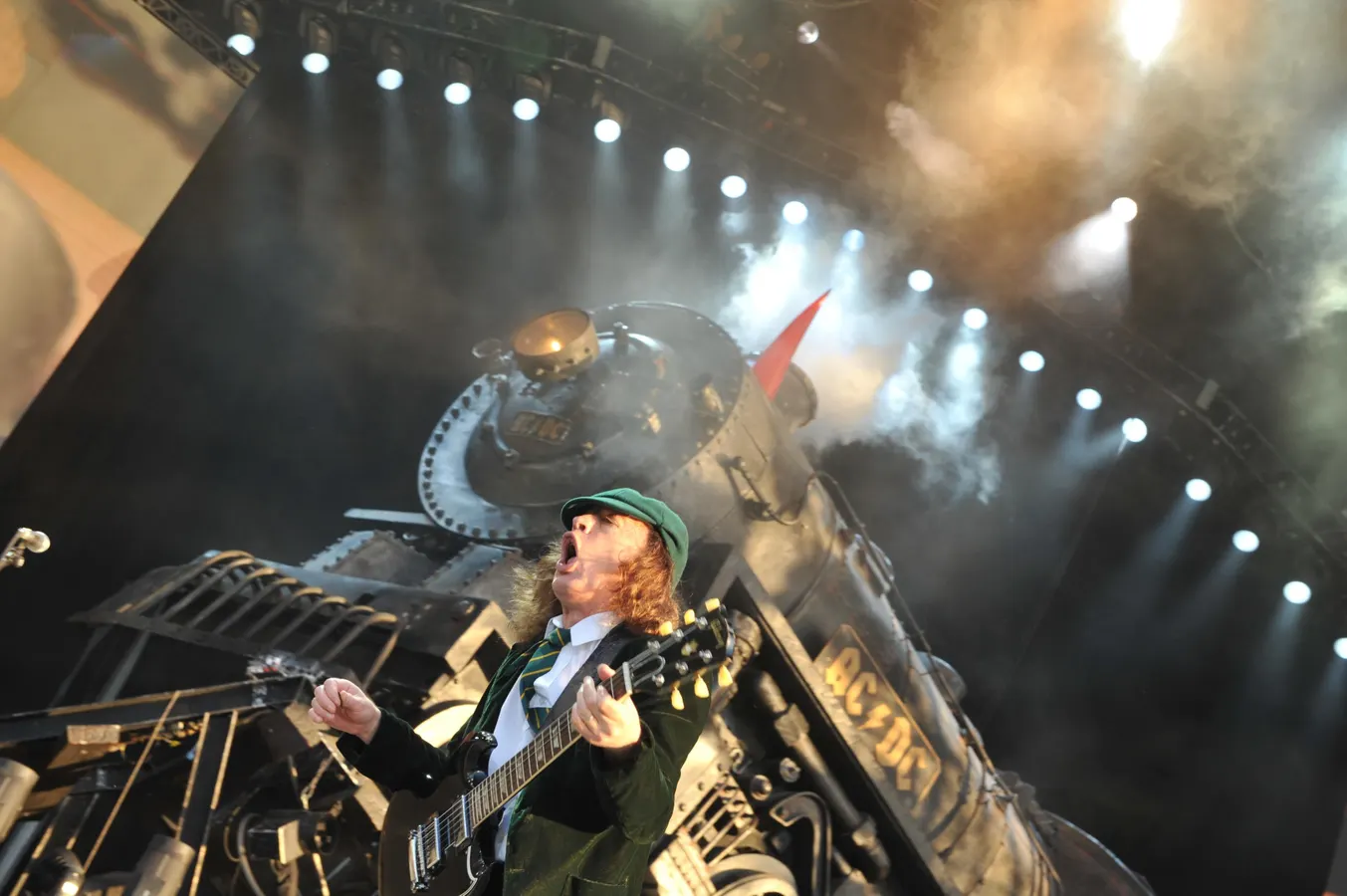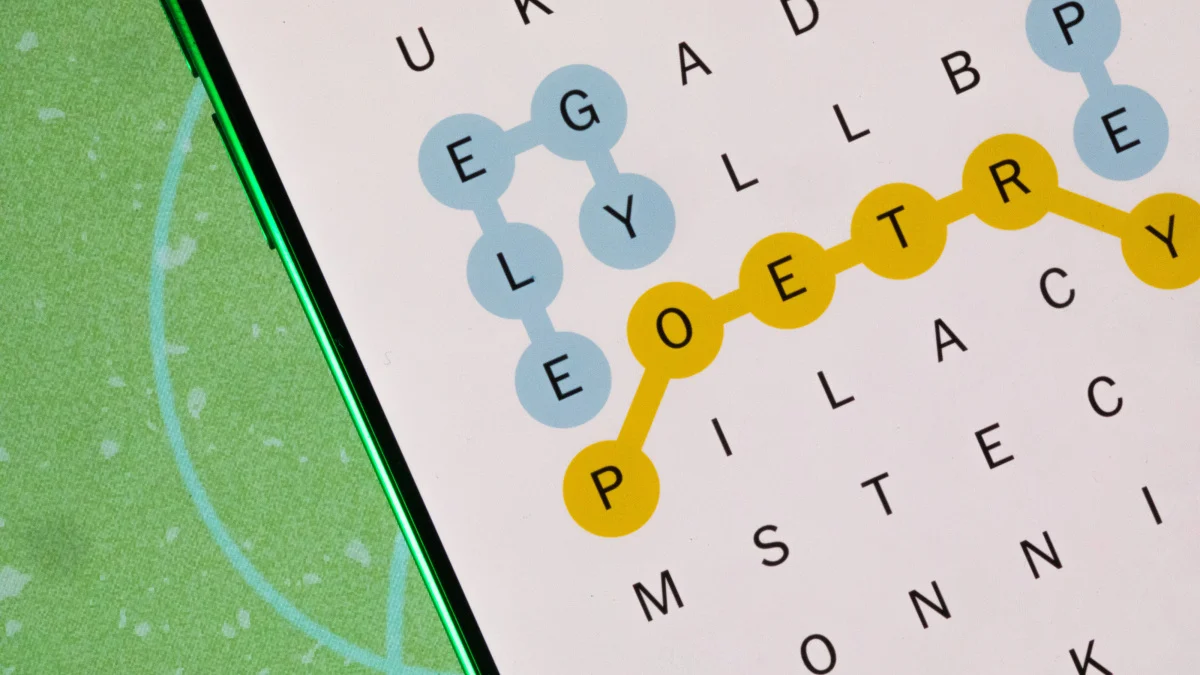Copyright forbes

DERBY, UNITED KINGDOM - JUNE 11: Angus Young of AC/DC live on stage at Download Festival on June 11, 2010 at Donington Park. (Photo by Rob Monk/Classic Rock Magazine/Future Publishing via Getty Images) Future Publishing via Getty Images Trains are a popular theme in music - rock legends like Ozzy Osborne, Aerosmith, Bruce Springsteen, The Rolling Stones, Jimi Hendrix and The Doobie Brothers, and artists in other genres like Cat Stevens, Gladys Knight and the Pips, Soul Asylum and Jason Aldean have sung about the mystery, rhythm and romance of trains. Recent advances in physical AI (Artificial Intelligence), AoT™ (Autonomy of Things)*, and sensors (cameras, radars, LiDAR, GPS) have propelled autonomy in surface transport (cars, trucks), blue collar industries (agriculture, construction, logistics, mining), maritime transport (ocean and underwater), aerial transport (drones, VTOL taxis), and space exploration. Rail is the next frontier for autonomy, with interesting applications and innovations emerging in areas of intermodal transport. Glīd Tech, a Southern California company is passionate about revolutionizing short distance logistics, and re-energizing U.S. industry with their technology - a universal vehicle that transitions seamlessly between railroad tracks and roadways. Similar to in areas like construction, agriculture and mining (which typically operate in harsh conditions and remote locations), relates to work done by rail engineers and logistics workers (typically in more benign conditions). Both businesses face pressures of skilled talent availability, training and retention, and guaranteeing safe operations and profitability. They also operate in semi-controlled environments, reducing autonomy-related safety risks, and making deployment and autonomy benefits realizable in the short term. This article discusses autonomy developments in Europe for rail-based freight and people movement, and one in the United States for freight movement at ports. Futurail - Bringing Autonomy on Track Futurail, founded in 2023, is a Franco-German start-up, focused on developing and deploying its proprietary safety-certified autonomy stack for rail. It integrates its hardware-software offerings with new vehicle designs developed by leading rolling stock OEMs, and retrofits existing fleets (operated by commercial and government operators) to provide autonomous and semi-autonomous operation. It recently closed a €7.5M seed round investment co-led by Paris-based Asterion Ventures and Munich’s Leap435, with additional backing from EIT Urban Mobility (Europe), Zero Infinity Partners (U.S.) and Heroic Ventures (U.S.). The above press release also mentioned strategic partnerships with France’s Lohr Group (a global transport systems manufacturer), and U.S.-based Parallel Systems (developing autonomous, battery-electric freight rail vehicles). MORE FOR YOU Futurail CEO Alex Haag (an ex-Tesla and Argo engineer with significant experience in road autonomy) feels that short distance, regional and rural train networks are where the initial sweet spot for Futurail is. There are over 10,000 such operating trains in Europe, needing 5 railroad engineers (train drivers) each ( ~$100,000/year/engineer). Recruiting, training and retaining such talent is difficult and expensive, and considering that the capital cost of such trains is ~$2-20M (depending on the size of the train), engineer cost/train can be up to ~30% of the total cost on the smaller trains. Autonomy makes this a financially more robust business. The hardware autonomy stack costs ~$100K/train (5% of the capital cost for smaller trains, and even lower for larger trains). There are opportunities for high speed, long distance rail (like TGVs in Europe and Shinkansen in Japan) to eventually use this technology, but the challenges are significant (autonomy is more challenging at higher speeds of 320 km/hr.) and the economics of going autonomous is not clear, given the higher occupancy of such trains. Futurail product offerings are depicted in Figure 1. Figure 1: Futurail Integrates its Driver Components into New OEM Railcar Models or Retrofits them into Existing Railcars Futurail Integrate provides a service to mechanically and electrically integrate certified autonomy hardware into the rail car and customize the software API. Hardware includes long range radar, short and long range cameras & LiDAR, all installed in strategic locations. It also includes GNSS and IMU sensors. Futurail Detect uses the above sensor suite, sensor fusion and trained software to detect obstacles, signal infrastructure, pedestrians, vegetation, track conditions and trains at ranges up to 400m and speeds of 160 km/hr. It is designed to work in all weather conditions. Futurail Localize uses the sensor suite and software to provide accurate localization of the train to within 10 cm (important for passenger board/discharge and freight load/unload). It also supports detailed mapping for autonomy operations. Futurail Control is software that uses the above three capabilities to provide full control of autonomous train operations, including speed control, braking, and other passenger related functions like door operations. These functionalities are provided as an upfront engineering service charge to install the hardware, and yearly software licensing fees. The levels of autonomy and implementation schedules are shown in Figure 2. Figure 2: Futurail Plan for Different Levels of Rail Autonomy Futurail has relationships with several European rail infrastructure managers and operators like Infrabel in Belgium. This allows them to mount their hardware stack and collect real-life rail data across different geographies and seasons, track, traffic, weather and lighting conditions and a number of level crossings (Figure 3). Data collection activity started in 2023, and is supplemented by in-house developed synthetic data. Such data is used to train and validate the perception stacks, provide updated maps of routes, vegetation and track infrastructure, and improving localization capabilities. Figure 3: Left - Wide and Narrow Angle Camera Images; Middle - Long Range LiDAR Point Cloud; Right - Sensor Stack Integration on Railcar Front Alex Haag is passionate about bringing his Tesla experience to bear " As mentioned above, the Lohr Group, a global transport systems manufacturer, is one of Futurail’s customers. Founded in 1963, today it is an international company focused on transporting heavy equipment and automobiles via road and rail. It has 2000 employees, and is a global leader in car carriers. The rail focus is about building platforms and wagons that can transport trucks and truck containers via rail, to minimize road travel and reduce transit times. It also builds the DRAISY, a light, battery-powered train for passenger transport on small railway lines in rural areas, designed to be compatible with ~ 9,000 km of local lines serving rural communities in France. Futurail is partnering with the Lohr Group to bring autonomy to the next generation of battery-electric light trains. The collaboration integrates the FuturailDriver technology into Lohr’s new platform, designed to reopen and modernize rural rail lines. The first deployments will automate depot and yard operations such as pre-positioning and charging - tasks that currently consume valuable operator (rail engineer and logistics operators) hours without generating passenger or freight revenue. Futurail aims to certify these first autonomy functions by 2027. The FuturailDriver will also initially assist human train drivers with obstacle detection, and enabling fast and smooth braking (ADAS or Advanced Driver Assistance Systems for trains). Finally it will be used for track monitoring, automatically reporting issues such as encroaching vegetation. According to Alex Haag, Parallel Systems - Powering Autonomous Rail The U.S. freight logistics industry is a ~ $1T/year business (~4-5% of its GDP). In spite of an extensive national rail network, 90% of freight is serviced through roads and trucks. Rail freight is optimized for long distances, typically has ~50 wagons (1.5 miles long), requires extensive manual operations at load/unload stations, and is inflexible in terms of routing and last mile delivery. Parallel develops as an alternative to short-haul trucking thereby decongesting highways and reducing pollution. This enables railroads to serve new markets using rail infrastructure that is heavily under-utilized, with reduced shipping costs and lower pollution (due to lower metal-wheel-to-rail friction, rail is incredibly efficient in terms of fuel consumption, delivering 1 ton of freight across 500 miles with one gallon of diesel or a single 1 hour battery charge in case of electric trains; trucking consumes 50 gallons for the same distance because wheel-road friction is much higher). The company is headquartered in Los Angeles and led by CEO Matt Soule, an ex-Space X engineer. It has raised ~$100M in funding to date. Figure 4 shows Parallel’s rail wagons delivering containers during a recent Phase 2 trial in partnership with Genesee & Wyoming, a short distance rail and transportation company. This follows approval by the FRA (Federal Railroad Administration) and completion of Phase 1 in June 2025. This is Parallel’s first commercial pilot, along a 160-mile stretch of two Georgia short lines. Figure 4: Parallel Systems' First Commercial Pilot in Collaboration with G&W in Georgia Parallel Systems A key design feature in Parallel’s autonomous rail carriers is that unlike conventional trains, it uses bumpers instead of couplers (which mechanically and electrically connect adjacent rail cars and require manual operations to hook up air hoses for braking and separation. This makes it difficult and expensive to disaggregate freight). Each vehicle has its own individual a powertrain and intelligence on board. With the bumper architecture, vehicles form platoons by regulating motor torque to maintain a force between the bumpers. This force allows the aerodynamic drag on the lead vehicle to be shared across the platoon, increasing overall efficiency. Moving single rail cars down the track is inefficient because it prevents traffic from going the other way. With platooning, groups of groups of 2 or more (up to 50, ~ 0.5 miles long) vehicles can move together. Apart from lower drag and higher energy efficiency, platooning optimizes use of rail infrastructure. Parallel’s fleet software coordinates the assembly or disassembly of platoons as required, enabling smaller batch packetized freight, providing flexibility and speed in terms of destinations and delivery times. As opposed to long distance rail which consolidates large amounts of freight before it departs, disaggregating freight into smaller batches for shorter distances serves local businesses much more effectively. Each rail car is equipped with a perception and rail health sensor suite that monitors the surroundings and ensures safe operation, with data on vehicle status and position uploaded to servers in real time, and made available to rail authorities and business customers. Proprietary software controls movement and speed, adhering to railroad operating practices and real-time bulletins. Parallel’s solutions are designed to be compatible with standard rail infrastructure, allowing it to be used seamlessly across the entire rail systems. Rail vehicles can be transferred to central rail lines, trucking hubs or customer warehouse locations. Figure 5 shows the vehicle tripping the grade crossing arms just like a normal train would. Figure 5: Parallel Rail Wagon at Grade Crossing. Vehicle works with Standard Physical Track and Train Control Infrastructure Parallel Systems In terms of logistics services, Parallel offers: which open up new freight lanes between city-to-city pairs where service doesn’t exist today, connecting any pair of intermodal terminals, ports, and existing rail-served sites with container service. to route containers into and out of ports, to intermodal rail terminals or near-port distribution centers, reducing the amount of time a container dwells on congested port real estate, lowering drayage activity and the associated emissions. to warehouse docks or small terminals developed in distribution centers or industrial parks, giving customers direct access to rail. The partnership with Futurail is to integrate certain types of sensor hardware (like LiDAR) into Parallel’s rail cars, as well as aspects of the Futurail Driver and autonomy stack. CEO Matt Soule: is coming to trains - for freight and passenger movement. Autonomy and electrification, and the flexibility to move smaller batches of freight over shorter distances provides significant cost savings, improves time-to-market, and reduces highway congestion and pollution. A significant advantage is that rail is governed by the FRA (Federal Railway Authority), and certification for autonomous operation is governed by a single entity vs road autonomy which requires state level approvals in the United States. Imagine how the music will sound in the new generations of autonomous and electrified rail! * AoT™ is a Trademark of Patience Consulting LLC, please visit aot.llc for more information. ** The term “Purple Collar Autonomy” is credited to Brad Reams, Director of the Great Plains Industrial Park, who I interviewed for an earlier article: https://www.forbes.com/sites/sabbirrangwala/2025/10/17/glds-universal-platform-provides-frictionless-rail-to-road-logistics/ Editorial StandardsReprints & Permissions



